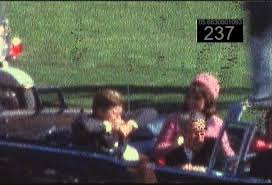 Unfinished business in a nation’s history can undermine citizens’ trust in government and sense of participating in a meaningful collective life.
Unfinished business in a nation’s history can undermine citizens’ trust in government and sense of participating in a meaningful collective life.
In the case of fatal moments such as assassinations and terrorist attacks, the damage adds to the impact of the attacks and helps the attackers achieve their goals of demoralizing the people and fraying the social fabric. Compounding the problem, government agencies and the media often show reluctance to reveal what they learn because they lack 100% assurance of its validity, because they fear the public reaction, or because they are covering up their own mistakes. As a result, people often believe that certain crimes remain unsolved or are even unsolvable when in fact they have already been solved but the information is being denied to the public.
Five such fatal moments have occurred since 1960 that are considered unsolved, and yet evidence and logic point to solutions for all five of them.
First, we now have reason to believe that Mary Pinchot Meyer, the senior lady friend and confidante of President John F. Kennedy during his White House years, was shot to death on the Canal towpath in Georgetown by a hired killer at the behest of the KGB.
Second, while Meyer’s tragic end perhaps merited only minor news coverage (though in fact she had played a key role in setting off the Cuban Missile Crisis), it may now have gained greater significance because it raises anew the question of whether the KGB organized the assassination of John F. Kennedy himself. In fact, a reinterpretation of evidence regarding Meyer adds to the growing body of evidence and analysis suggesting that Lee Harvey Oswald was a KGB-trained and -handled operative who, lacking a go-ahead from the KGB, proceeded on his own to assassinate Kennedy. The book Programmed to Kill by Ion Mihai Pacepa explains in great detail that Oswald’s friend George de Mohrenschildt was his KGB handler. The murder of Meyer shows that the KGB was intimately involved in the aftermath of the Kennedy assassination as well as in the run-up to it. However, to make sure that Kennedy was killed, the KGB appears also to have arranged for a mafia sniper to fire on Kennedy from the grassy knoll in addition to Oswald.
Third, there is evidence suggesting that the correct characterization or diagnosis of the role of President George W. Bush in the run-up to the September, 2001 terrorist attacks is criminal negligence. This interpretation suggests that the 9/11 Commission Report, which failed to investigate the doings of senior government officials in the run-up to 9/11, was a cover-up. There has indeed been a conspiracy: Bush covered up for his negligence, in part by distracting the public via his calls to attack Saddam Hussein’s Iraq. But this cover-up conspiracy took place after 9/11, and it is ongoing.
Fourth, telling circumstantial evidence suggests that in 2004 the FBI learned the identity of the Anthrax Mailer of 2001. He was an al Qaeda terrorist named Abderraouf Jdey. But because the details of this finding were highly embarrassing to the Bush Administration, Bush, Cheney, and FBI Director Robert Mueller conspired to suppress all mention of Jdey and to look elsewhere, which ultimately led to the invalid case against U.S. Army scientist Bruce Ivins and his tragic suicide.
Fifth, it appears that FBI also concluded in 2004 that Abderraouf Jdey brought down American Airlines Flight #587 in New York City on November 12, 2001 with a shoebomb, killing 265 people. But, as in #4, the Bush Administration engaged in a cover-up.
Where are the American journalists? Where are the editors of America? Where are the American historians?
*****
Kenneth J. Dillon is an historian who writes on science, medicine, and history. See the biosketch at About Us. See also his The Knowable Past (2nd edition, Washington, D.C.: Scientia Press, 2019).
